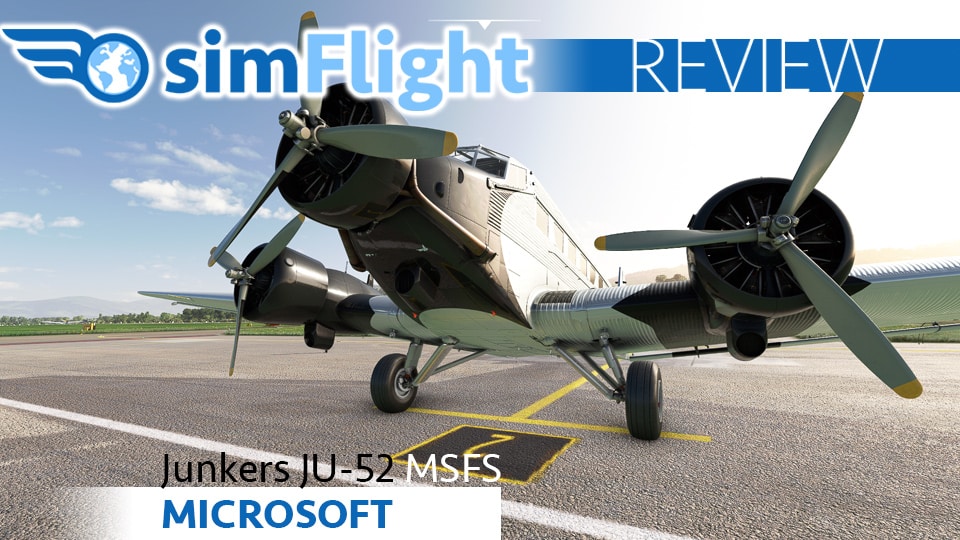
Originally, the Ju52 was to be launched with the World Update VI as the first in the new “Local Legends” series, but the release was then postponed for a fortnight. Was it worth the wait? Michael Kalff writes about a premiere with light and shadow.
The Original
In fact, hardly any other aircraft would have been more suitable as a “local legend” for Germany, Schwitzerland, Austria than the Ju52. 1932 saw the maiden flight and entry into service of the pioneering design for transporting passengers and cargo, even to airfields that were hardly developed (“mother of all passenger aircraft”). Within a few years, the robust low-wing aircraft with tailwheel, three radial engines (mostly from BMW), two-blade propeller, and the characteristic corrugated sheet metal planking became the standard aircraft in Europe, but also a successful model in Asia, South America, and Africa. The “Aunt Ju” reliably carried 17 passengers or about one or two tons of cargo over the Alps and the Andes, over deserts and coasts. Around 5,000 aircraft were built until 1954 (the last under licence in Spain). Military requirements were already incorporated into the development, and despite the devastating bombing of Guernica by German Ju52s (1937, “Legion Condor”), the Ju52 showed a primarily civilian character: it was safe and sedate rather than agile and fast. On the other hand, it had few requirements for take-off and landing (STOL) and was thus assigned the role of a supply aircraft for the front in the world war (transporting troops and materials, flying out the wounded). However, it also dropped paratroopers and cargo gliders, for example over 500 Ju52s took part in the battle of Crete in May 1941 (“Operation Merkur”). Ju52s were in service in the French Air Force until 1970, in Spain until 1974 and in the Swiss Air Force until 1981.
Civilian aircraft also proved durable, with some getting roles in film and television. Half a dozen aircraft still flew worldwide until 2018, in Germany the famous D-AQUI (modern identifier D-CDLH). The fatal crash of the Ju52 near Tschingelhörner on August,4th 2018 was the abrupt end for crew and passengers for almost all: the accident investigation revealed existential structural damage to the Ju52, which did not lead to the accident, but had not been noticed during maintenance. Almost all aircraft were grounded. Unfortunately, Lufthansa then refrained from an extensive overhaul of its Ju52 aircraft for reasons of cost. D-AQUI now stands as a museum piece in the Quax hangar at Parderborn EDLP airport (…and greetings to Aerosoft: the Parderborn people are giving us the airport and the Quax hangar in MSFS, just download it in the Marketplace). One of the two remaining Swiss Ju52s is currently being made airworthy again in Altenrhein, one is waiting in Johannesburg for better economic times, one is flying on the US East Coast and one in France near Paris (both operated by historical aircraft clubs). In 2011, all six Ju52s still flying in Europe met at Hahnweide for a formation flight (18 times 600 hp: wrrrrooooom).
D-AQUI is also the actual prototype of the Mircosoft aircraft, in both historical and modern variants. This is a good choice, because the D-AQUI has an eventful and well-documented history, which is so typical for the Ju52: from Germany to Norway, to Ecuador, to the USA, back to Germany, originally on floats, with BMW engine, and two-blade propeller, then on wheels, with P&W engines, three-blade propeller and finally also modern avionics. MSFS presents the “modern” D-AQUI in its last flown condition with Lufthansa, and the historical variant with original cockpit, wheels, floats or with skis, as it was used in Norway from 1936 as a transport aircraft on the North Cape route and later along the Amazon river. The Junkers grandson Bernd Junkers, an organisation with a Ju52 and Ju52 pilots were involved in the creation of the model.
The implementation – visually
If you dare to take on such an icon, you risk falling, so bringing in external expertise was a good idea. I’ll start with the historical version from 1939 … preferably at a historical location, the famous Apron of Tempelhof. Voilá…there she stands, gleaming in Berlin’s September sun, polished to a shine, glistening factory-new. The outer skin is enormously detailed, extremely sharply modelled, even small dents, I have never seen that in MSFS, wow! The Ju52-typical corrugated sheet effect is convincingly realised. But the applied markings D-HDAL are a blunder. This historic aircraft did not have such a designation, neither at that time, nor later. Perhaps there are licensing problems with “D-AQUI”? At least you can enter the historically correct identifiers when creating the flight (i.e. D-AQUI, for Norway then LN-DAH, LN-KAF, Ecuador: HC-ABS, or USA: N-130LW), which then also appear on the fuselage. There you go. The landing gear is also very, very detailed, especially the tail wheel suspension, well done! But also everything without signs of use, the tyres are new. The propeller shows few signs of use from very close up and the wing root – so it works, why not everywhere?
The engines are a joy to behold – the propeller mounting, the nine cylinders arranged in a star shape, the exhaust … wow. Hugo Junkers actually only wanted to give his passenger and cargo aircraft one engine, but Lufthansa, as the main customer, pushed through three engines (hence the Ju 52 3m). But – are they also BMW, or the much later P&W? The BMW logos are missing, although the Bavarians were already paying attention to them at that time, as they were in direct competition with Daimler-Benz when it came to aircraft engines. Also missing are the “forehead cowls” with adjustable ventilation – typical for the BMW radial engines in the Ju52. These are details … but in sum they distinguish between “toy” and “simulation”.
I take a quick look at the water version and place it in front of Trondheim, where this Ju 52 was in service in the 1930s. The floats dive in credibly, the “flying boat” bobs in the swell in a light breeze, it looks nice. However, the brand-new hull looks even more out of place here – in salt water you get stains and corrosion. I’m not a big seaplane fan… can’t do much with the situation apart from a few postcard photos. Maybe I’ll make friends with it on the Amazon one day, with the Ju I finally have a reason to explore the great tropical river.
So get in the cockpit… and … yeeeaaa… steam locomotive time! Whatch collection! Labels in German … “Höhengas”, “Schmierstoff”, “Feststellbremse”, wonderful! Lots of valve wheels, back then flying was still manual labour! The panel shows signs of use, simply beautiful. Behind the pilots a battery of switches … unfortunately one third is not implemented (cockpit and cabin lighting). The plexiglass windows are brand new (almost without scratches, without stains, insects…), they can be opened on the sides and on the roof (in flight, however, there is a very lukewarm breeze instead of the expected strong wind). The roof hatch was a military wish, in order to mount MGs here; in civilian use it can be used to “fly a convertible”.
The cabin is extremely detailed and seems to me to correspond well to the original – luggage nets, leather seats on bumped linkage, that is very finely done! You can almost smell the materials, that’s how real they come across!
Then I look at the modernised version, this time in Altenrhein, and again I am puzzled by the registration: D-Ju52. It’s meant nicely, but nonsense. In fact, it is the D-AQUI, which in reality has the old registration on its fuselage and wings, but is officially registered as D-CDLH (for an A-registration it would need a weight of more than 20 tonnes). The brightly polished, aseptically clean sheet metal glistens, not even traces of soot near the exhausts, traces of dirt above/behind the wheels, perhaps this is exactly what the original looked like in museum condition. The engines look like the 1939 version, now – correctly – with adjustable three-blade propellers. Presumably, both versions are equipped with PW engines, but they were only installed in the USA in 1976. No other changes catch the eye during the tour, the cabin has newer seats, we swing into the cockpit.
And whoops … everything here is brand new! First I have a moment of “where are the textures” … but no, it’s meant to be: the panels are spotless, scratch-free, sterile. On the photos you can see the quite new dashboard of the overhauled D-AQUI, but after 30 years of use (in 1986 the Ju52 had been modernised at Lufthansa Technik in Hamburg) something must have oxidised, bumped, scratched. Too bad, together with the – also here – almost brand-new windows, there is no immersion. It’s a bit too much “computer animation”. The instrumentation is modern, English-language, corresponds almost 1:1 to the real model, only the artificial horizon appears very flat, the spherical shape of the display is not at all obvious. New compared to the 1939 version is also the much larger fuse panel behind the pilots and the radio group in front at the bottom of the “control table”, as well as the control levers for propeller pitch.
And how it flies
Starting the engines in steam locomotive times is a complex ritual with many actions at exactly the right moment. In the historical version I can’t get it right the first time, even with the checklist (although it’s already simplified…the flywheel sequence is omitted), I have to help myself with “Ctrl. + E”. And I’m surprised – would have expected the engines to shake and sputter and smoke, then settle into the rich hum of 660hp each, with no effective silencing. None of that, big disappointment: they just start up with “Ctrl+E”, almost like electric motors and sound more like model aeroplanes. This is where Microsoft misses out on very important evaluation points. The Ju feeling includes three loud power packs that confidently communicate their condition. Throughout the rest of the game, this important element of immersion is missing! With support from the manual and this great explanatory video by JayDee, I then manage the start “by hand” and the sequence really sounds better now, but still far too soft.
This is how the three BMW132s sound real in a Ju52: every horsepower can be heard impressively.
The modern version doesn’t do any better – although I even manage to start the engine without a checklist because the sequence is a bit more automated here, the experience is close to zero. The next surprise during taxiing – the Ju52 is a tailwheel aircraft and would therefore be challenging to control: either via right / left brake, or via right / left engine power. Microsoft’s Ju, however, uses pedals to control the tailwheel as if it were a nose wheel. A search reveals that this is true: the Ju52 has a steerable tail wheel. Wow. Another thing is noticeable when taxiing: the aircraft seems extremely top-heavy, when braking the tail comes up …uuuuhhh. Always pull the control horn far back when braking, that works!
Line up, trim and flaps to take-off position (25 degrees), accelerate. Adjust the engines to 2,050 rpm, the Ju picks up speed quickly, and the stern comes up at 20 knots. From 40 knots it wants to take off, I keep it on the runway, beyond 60 knots it is allowed to hover. No wonder how light it gets into the air – with its wing area, the Ju52 easily keeps up with B737s and A320s, but weighs only a fraction of them. After one minute you would have to reduce the power to 1,950rpm, after 30min climb with flaps on 10 then down to 1,850rpm and flaps in for cruising. The engines of that time wanted to be loved and paid attention to, it was an intimate dialogue with the hummers to keep cylinder head temperature, exhaust gas temperature, oil pressure and oil temperature in balance: Power, mixture, speed, altitude, propeller position, oil cooling, air flaps vary (here is the original manual from 1939 in German), Microsoft’s Ju52 unfortunately comes without a manual at all). Should have…would have…could have… Microsoft’s Ju engines are undemanding, hardly anything moves outside the standard values on the displays, and the engine management also shows almost no effects. You can’t kill the engines, but load them in the “red zone” for the whole flight, they can cope with that without comment. At most, “warming up” is visible … and the carburettor preheating in the modern version can be regulated somewhat to bring the indicators into the green range. It’s a pity, the engine management would have been part of a “Flying Legend”. Beginners could be assisted by an experienced co-pilot who would take care of the engines and comment on them, that would be very cool. But maybe it’s because the P&W engine is not as sophisticated as the BMW132 was back then, because the revs in the modern version can easily be increased to 2,500 without any effects on the engine parameters. This may be true to the model for the modern D-AQUI, but not for the historical one. But if you start the modern version at 2,500 rpm, the Aunt Ju gets going unrealistically fast and is already in the air after a few seconds.
In the historic version, the engine speed does not exceed 2,050, but when warmed up it is 2,100. However, the Ju wants to take off immediately, even at 30 knots, and it is impossible to keep it on the runway. Something is wrong with the tuning of the model and the engine power. That’s no fun!
BMW-specific settings such as regulating the oil cooler or the radiator flaps on the engine (which are visually not installed at all) have no effect. At least the lubricant and fuel gauges on the bonnets are nicely done in both versions, even if the tank content cannot be read from the cockpit – the fuel gauge is very inconspicuous, and the simulated whirring of the exhaust gases blurs everything anyway. If you were flying an adventure and fuel was scarce and running low, it would be very annoying not to have a fuel level indicator!
In flight, the top-heaviness of the modern version is really noticeable: I have to turn the trim all the way “up” to maintain the altitude. And somehow (similar to Justflight’s Piper, by the way) the Ju52’s trim rudder reacts inversely to the trim wheel on my flightstick, i.e. exactly the other way round, like all the other aircraft in the MSFS. I don’t know yet if this is a bug or a feature. By the way, top-heaviness and “airiness” on take-off get better when you fill the cabin with affluent belly adults and fill it up.
The Ju likes to stay close to the ground, the manual recommends 1,000m above ground and a maximum of 5,000m cruising altitude (passengers and crew were given oxygen masks for such altitudes), so it is the ideal aircraft for exploring cities and the countryside. It also has a cruising speed of 90 to 130 knots, the equivalent of a C172 or P28. The all-round glazed pilot’s cockpit is magnificent, the view is fantastic!
Unfortunately, the Ju-feeling is missing for a real pleasure flight: modern cockpit and windows are a bit too sterile, the engine is a well-behaved child…and sure, you can adventure over alpine passes and Andean canyons, through hot deserts and stormy coasts, through all weathers and through the night, but it would be much more simulative (especially with 3D glasses) if Microsoft would rework it!
Talking about night flying – in the modern JU52 the radio panel is completely in the dark. That may even be true in reality – there are torches conspicuously stuck next to it. But they are not operable…. and the red lights in the pilots’ backs for cockpit illumination are not functional either. It all looks half-baked. Just as much of a no-go: the Ju52’s quite remarkable landing lights, which should fold out of the wings: they are neither animated nor do they work.
Without autopilot, flying is also manual work at the control horn and the pedals. Constantly trimming to maintain the altitude and correcting the heading again and again – Microsoft’s Ju 52 does not stay on course by itself! A kind of autopilot is only available in the historical version, which is supposed to be able to follow a set course (“Kurssteuerung”), but activation only has an effect on the course correction display, which is the only one described in the original manual, “Kurssteuerung” does not appear in it at all. Microsoft’s version lacks an explanation and probably also the functionality. A VOR can be captured and its location is also shown on a kind of ADF compass. In the modernised version there are ADF and NAV displays, so it is possible to fly IFR with both.
The modern Ju doesn’t like icing conditions, only in the historic one there is anti icing equipment – but in MSFS it doesn’t put on ice anyway, despite arctic cold in dense clouds … a little on the windows, but nothing on propellers, wing edges, intakes… that’s in step back, when MSFS can model icing so impressively! All this has no effect on the flight anyway, and the de-icing in the 1939 version copes with it easily.
The accident of 2018 tragically proved that a Ju52 can stall despite its large wings. The stall speed is 65 knots – and here again the problem of Microsoft’s Ju model becomes apparent: up to 40 knots it holds its own in straight flight, only below 40 knots does it stall.
The service ceiling is given as 6,500m. Microsoft’s Ju takes a while to climb that high, but with a very lean mixture at 5,000m it still achieves 175km/h propulsion in straight flight according to the manual. Above 5,000m it leaves “its range”, the air becomes noticeably too thin. In an emergency, you could still get it to 5,500m (18,000ft), for example over a pass, but above that the engine parameters slowly go to extremes. I was able to get the Ju up to 20,000ft (6,200m), but after that it became very tedious … that can be considered “correctly implemented”!
You can still fly with Microsoft’s Ju52: standard manoeuvres, cruising over beautiful countryside and cityscapes, fighting through bad weather on its 40s route to the North Cape, exploring the Amazon.
When landing, the screwed-up high lift and the head load come into play again: she likes to bounce right back up off the runway, tends to stand on her head when braking, and if you pull the control horn when braking as an antidote, she takes off again right away… to milk the mice (do You say that in English?). Here, too, a well-fed round of gentlemen as passengers in the cabin helps, their weight pushing the Aunt Ju a little to the ground.
And this too: it takes a little getting used to in order to get to know and respect the sensitivities of the Grand Dame – dealing with Aunt Ju requires feeling. She then rewards it with wonderful time travels to the pioneers of passenger flight!
Conclusion
With its Ju52, Microsoft has placed a breathtakingly detailed 3D simulation of a museum piece in the MSFS. In order for the beautiful exhibit to pass as an “aeroplane” in the simulator, it still needs corrections to the flight model, the sound and the engine model, missing functions, as well as traces of use on the aircraft body and landing gear, the modernised cockpit and the cockpit glazing. Only then would the Ju52 be worthy of the claim of a “local legend” – and a very hot tip! I will not accept the low price of 15 Euros as an excuse – with the sales figures that Microsoft achieves with the Ju52, there is enough to work with care. Because carelessness in flying, that “doesn’t work at all”.
Info
| Pro | Contra |
| Beautifully detailed model, inside and out, that sets new standards Historically correct design Reasonable price | Unrealistically high lift during take-off and landing, top-heavy when lightly loaded Missing functions (landing lights, autopilot in the historical version, icing, engine management) Unrealistic new look of the exterior, the modern panel, the cockpit glazing, the undercarriage Unrealistically smooth sound No manual/no documentation |
| Buy | Test System |
| Marketplace in MSFS Developer: Microsoft Price: 15€ | IntelCore i5-10600K CPU @ 4.10GHz GeForce RTX 3070, 8 Gb Windows 10×64, 16 Gb main memory Various SSD |
Dr. Michael Kalff, translated by deepl.com


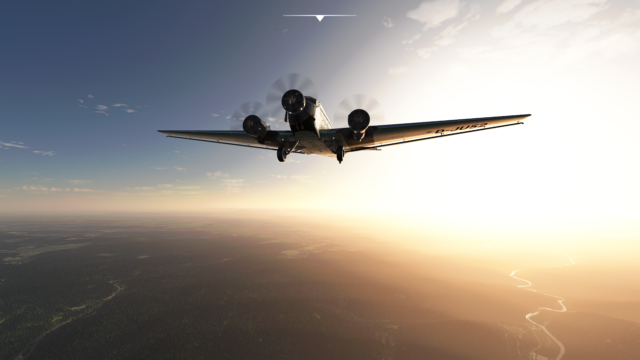
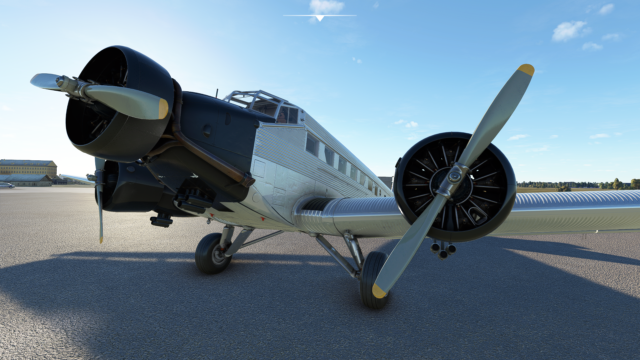
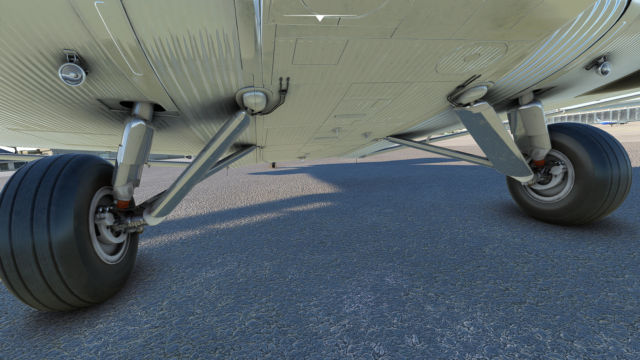
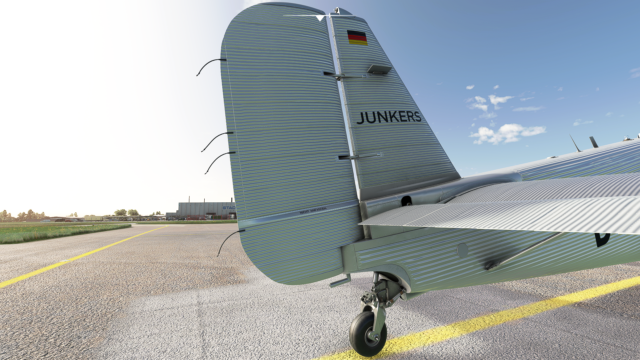
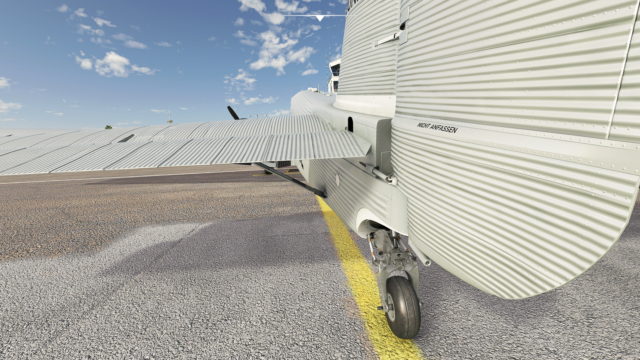
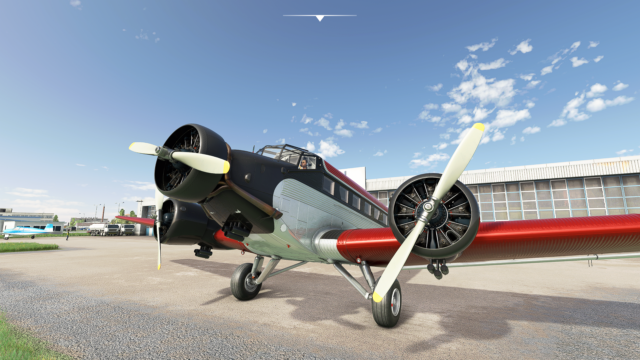
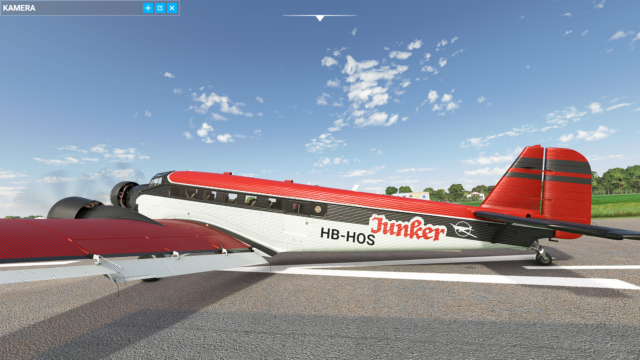
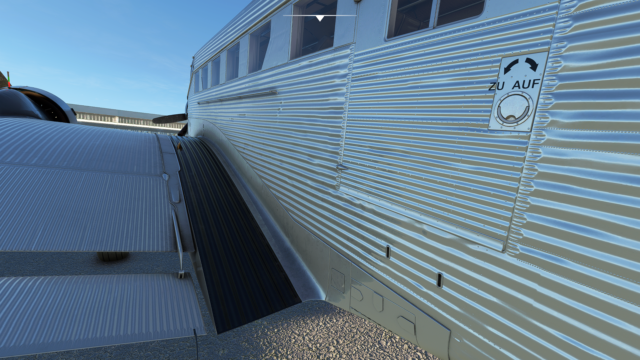
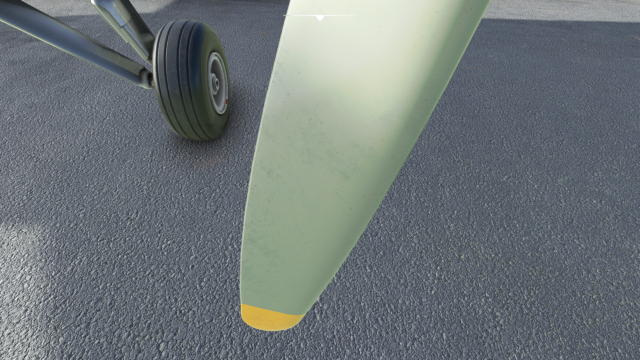
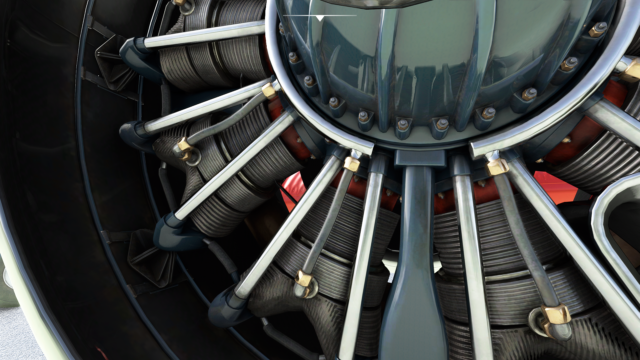
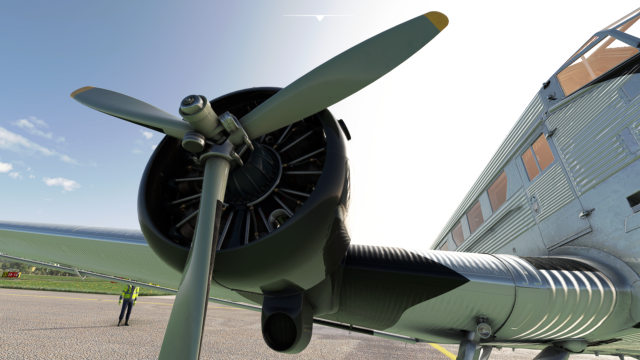
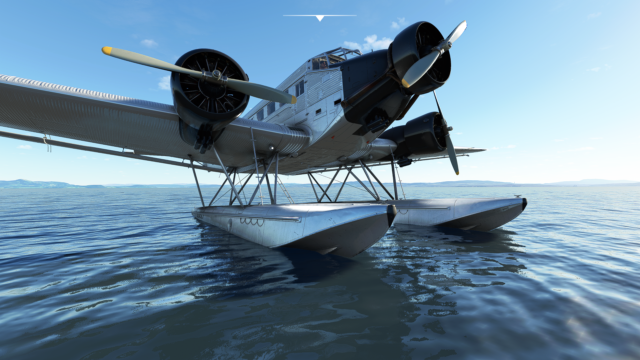
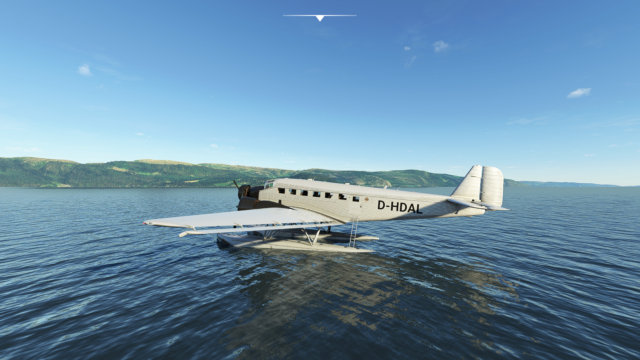
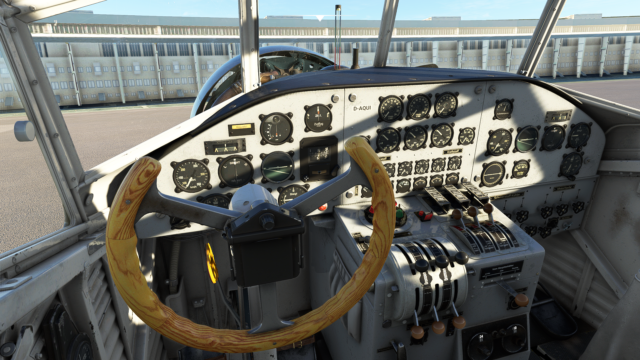
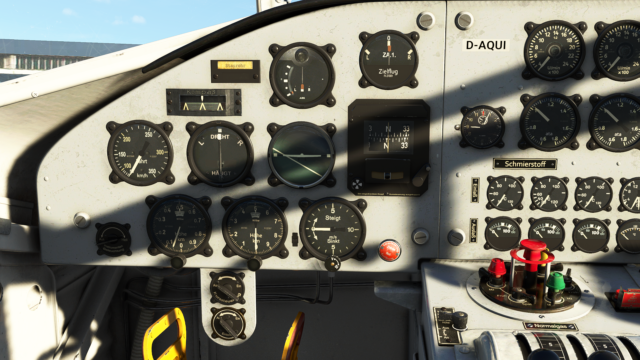
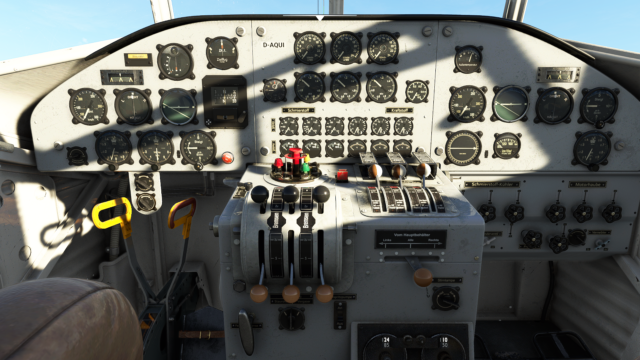
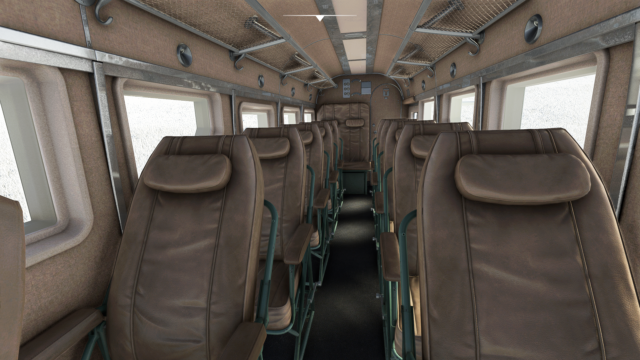
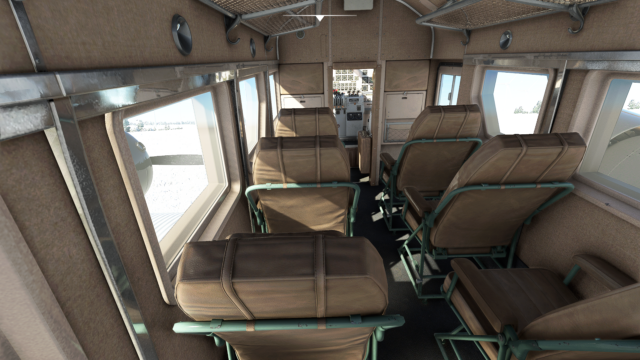
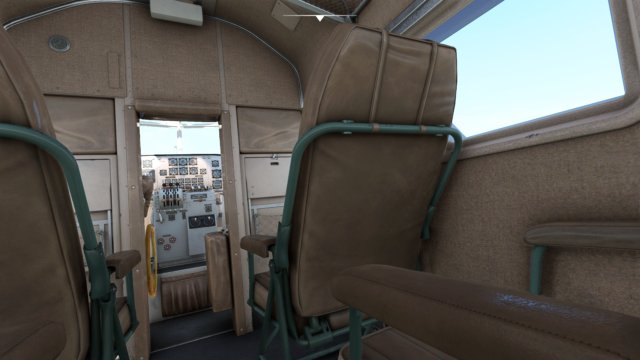
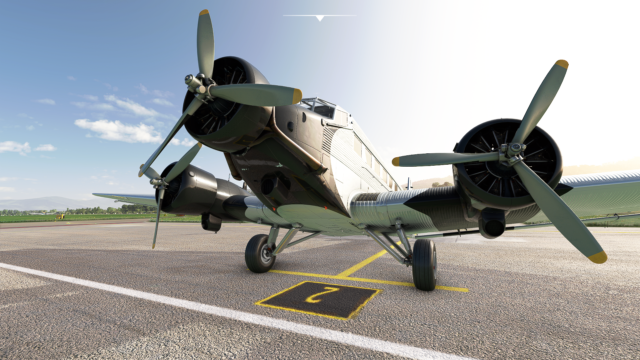
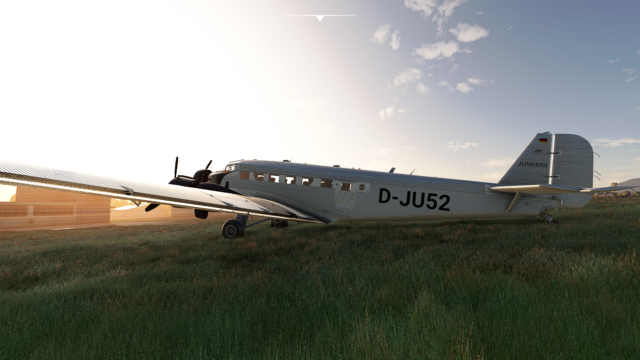
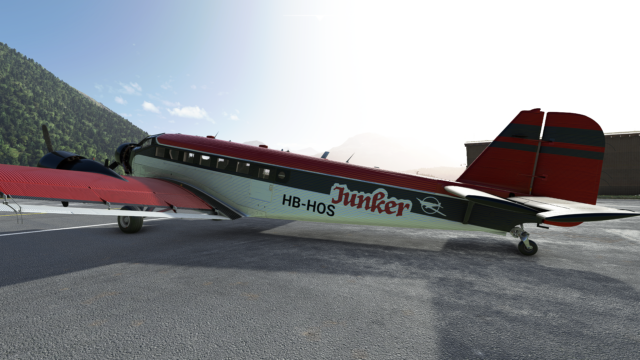
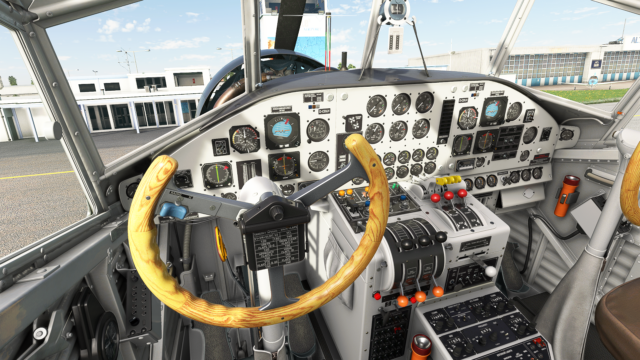
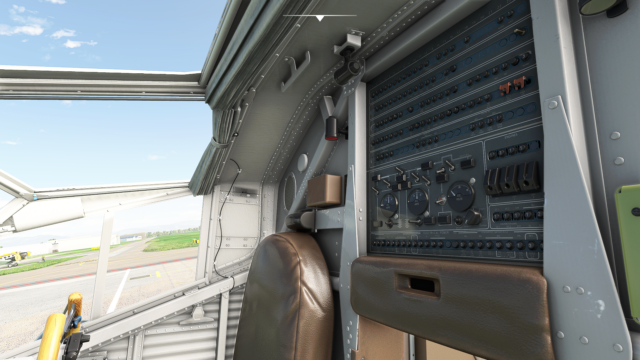
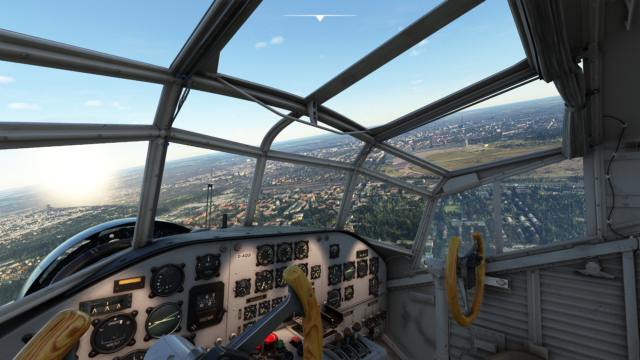
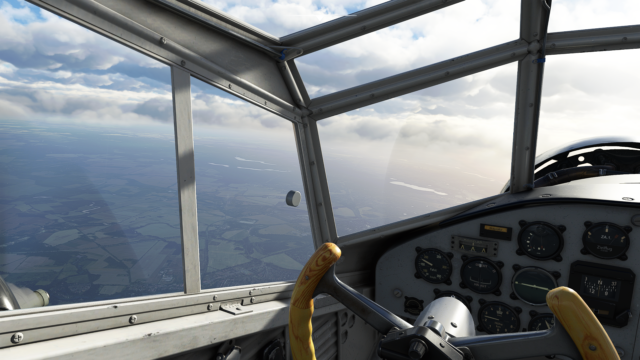
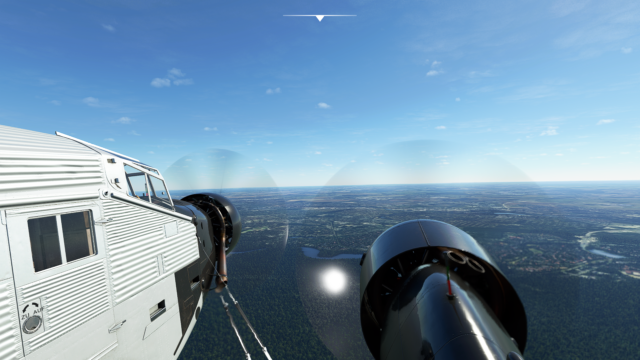
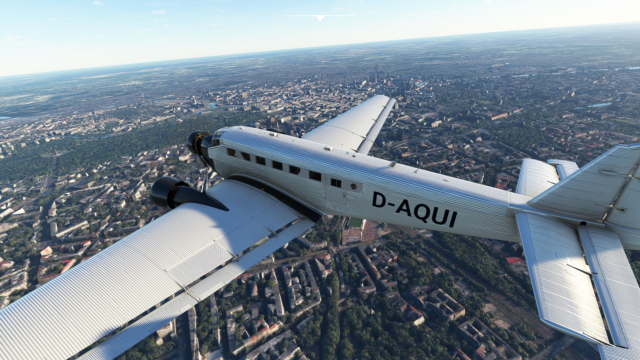
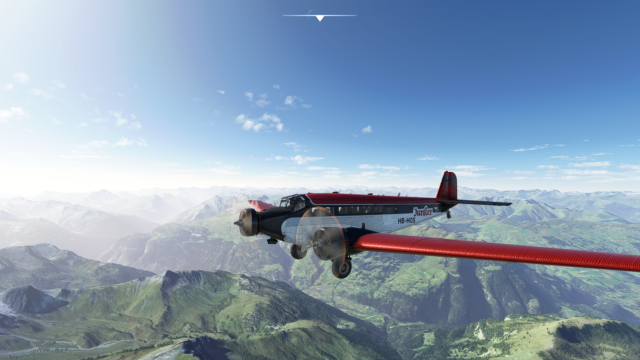
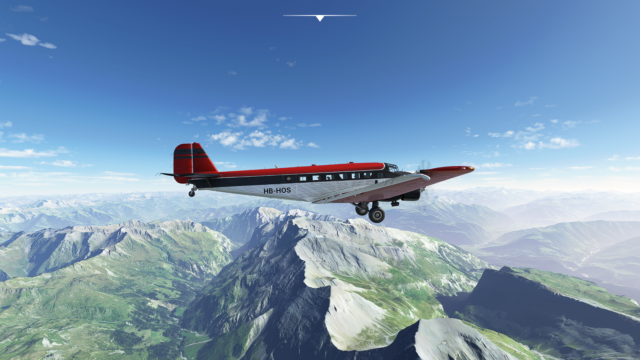
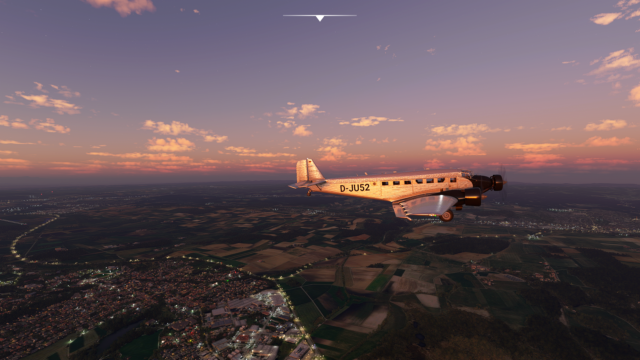
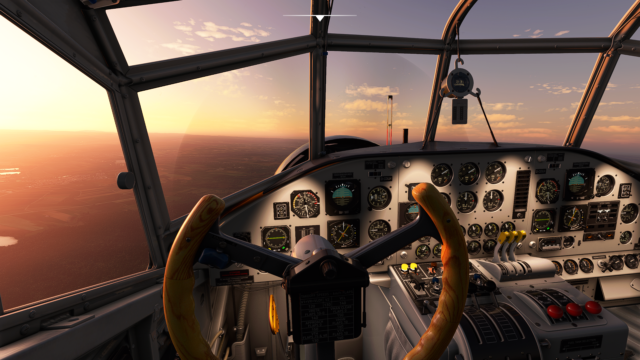
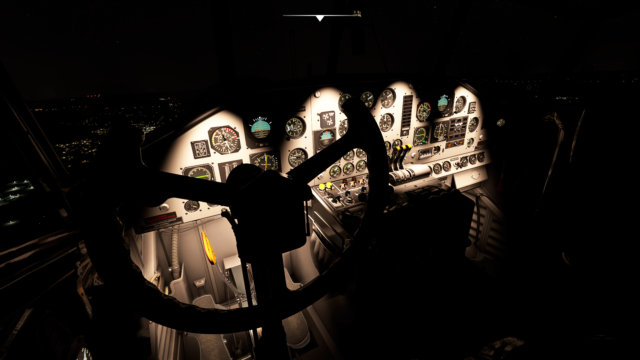
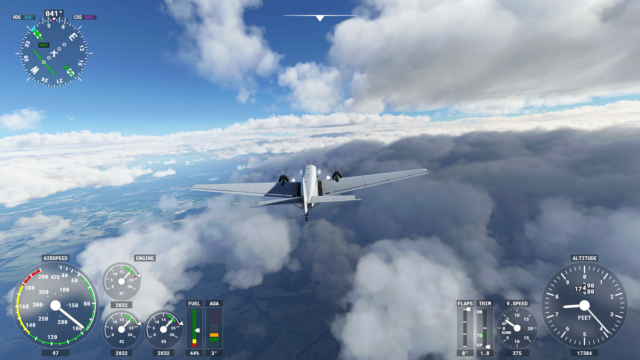
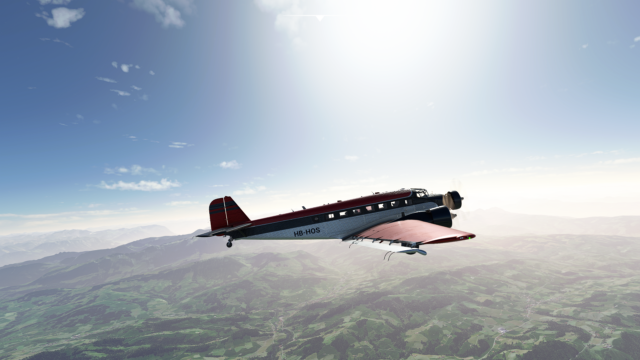






The Ju-52 default is almost without payload (as opposed to default 50%). So inevitably it will take-off in a short run. With a normal load, the performance is as expected.